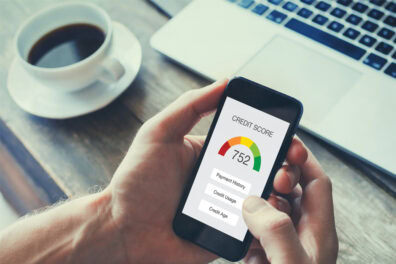6 Best Ways to Pay Off Credit Card Debt

Credit cards can be a great tool to help you make the purchases you need and build your credit. If you’re not careful, though, you can fall into a hole of credit card debt. This can have major consequences for your credit score and financial health.
If you’ve accumulated some credit card debt, the best thing to do is to start paying it off as soon as you can.
Credit cards have high-interest rates, and with most cards, the interest is compounding. This means that every day you accumulate interest, this interest is added to your total due. The new total due is what is used to calculate the interest for the next day.
Following are six ways to pay off credit card debt.
1. Take account of your debt
The first step to resolving your debt is to take account of everything you owe. Knowing how much credit card debt you have and how it is spread across cards is important to formulating a solid plan to pay it off.
Head online and compile a spreadsheet containing the card’s name, the amount of debt, and the interest rate on that card. If you have multiple cards, this step can take a bit of time. But it’s crucial to get the full picture of your debt.
2. Stop using your credit cards
If you can, stop using your credit cards completely. The worst feeling is to start to pay off your debt but feel like you’re going nowhere because you’ve racked up new purchases on a credit card.
You need to be honest with yourself and what you can afford to spend each month. Only buying what you have money for in your bank account is a necessary step to ridding yourself of debt.
In addition to avoiding using credit cards, avoiding all plastic can help. It’s a wise idea to try to spend your budget in cash. Reserve your debit card and transfers for rent/mortgage, utilities, and other bills. Withdrawing your free-spending money in cash can help you save money by making you more aware of how much you’re spending.
3. Re-evaluate your monthly budget
Take a look at all of your expenses. How much are you spending on all of your necessities? Are there areas you can cut down?
A good way to track how much you are spending is with a spreadsheet or a budgeting app. Budgeting apps can show you where your money is going and having to enter each purchase into a log can be enough to ward off unnecessary purchases.
Be honest about how much money you can free up. For example, if you know that cutting out all take-out and delivery expenses means that you’ll go without eating at work when you forget your lunch, it may be wise to leave a small budget for this.
The more you can be honest and plan, the more successful your plan will be to pay off credit card debt.
4. Make a plan
If you have multiple cards, there are two primary approaches to paying off credit card debt.
Option one is to pay down your highest interest rate card first. Option two is to pay off your card with the lowest debt amount. Both strategies require you to pay the monthly minimum on all cards in addition to putting more money toward the card of choice.
The first method is called the debt avalanche method. This saves you money on interest by first eliminating the card with the highest interest rate.
The second method is called the debt snowball method. This method can help you see progress quicker as you eliminate smaller debts. It allows you to build motivation as you see the effect of your efforts.
Just pick a plan, and get started.
5. Always pay the monthly minimum
No matter what your strategy, always be sure to pay the monthly minimum on all cards. This will help you avoid racking up more fees on late payments that contribute to your debt.
Only paying the monthly minimum, though, means you will spend a long time paying off the debt. That’s why it’s so important to follow your plan and continue contributing more money to at least one of your cards each month.
6. Consolidate your debt
If you have multiple credit cards with accrued debt or cards with extremely high-interest rates, it can be a good idea to consolidate your debt to reduce your interest rates.
The two main avenues to do this are with a balance transfer to a new credit card with lower interest or with a personal loan.
A personal loan can be a useful tool. You can take out a personal loan for the total amount of your credit card debt and use it to pay off your credit cards. Oftentimes personal loans have lower interest rates than credit cards. Once your loan is financed, you’ll know exactly how long the term is and the monthly payment you need to make to achieve freedom from debt.
Many credit card companies also allow balance transfers to new credit cards. Often, there are promotional deals where you can pay off your debt with a low APR for the first six months, and sometimes even up to two years. This can be a great solution to help you pay off your credit card with almost no accumulating interest for some time.
Start Paying Off Credit Card Debt Now!
Credit card debt can seem like an endless struggle, especially if you haven’t made any changes to how you spend or save. Fortunately, some of the best debt repayment strategies might be right in front of you at your local credit union.
At Jeanne D’Arc Credit Union, we offer Platinum VISA credit cards with low APR* for the first six months and various balance transfer options. This could be the solution you’re looking for to get yourself out of debt–faster!
Learn More About Jeanne D’Arc Credit Cards
Subscribe to The Money Mill to get a link to our free online financial wellness program that’s designed to help you successfully manage your financial life. Plus, you’ll receive emails whenever we publish a new article so you’ll never miss a beat!
* APR=Annual Percentage Rate. As low as 1.99% APR for the first six (6) months after account opening. After the first six (6) months from the account opening date, your rate will be based on the program you choose and your credit worthiness subject to a maximum APR of 15.99%. Rates as of August 28, 2019 and are subject to change. Other fees and charges may include: Cash Advance Fee of 2.00% of transaction or $5.00 minimum, $50 maximum; Minimum Interest Charge of $0.50; International Transaction Fee with currency conversion is 1.00% of your transaction in U.S. dollars. Introductory rate is for new cards only. Balance transfers from existing Jeanne D’Arc Credit Union VISA® Credit Cards are not eligible. A $5.00 Membership Account is required.



